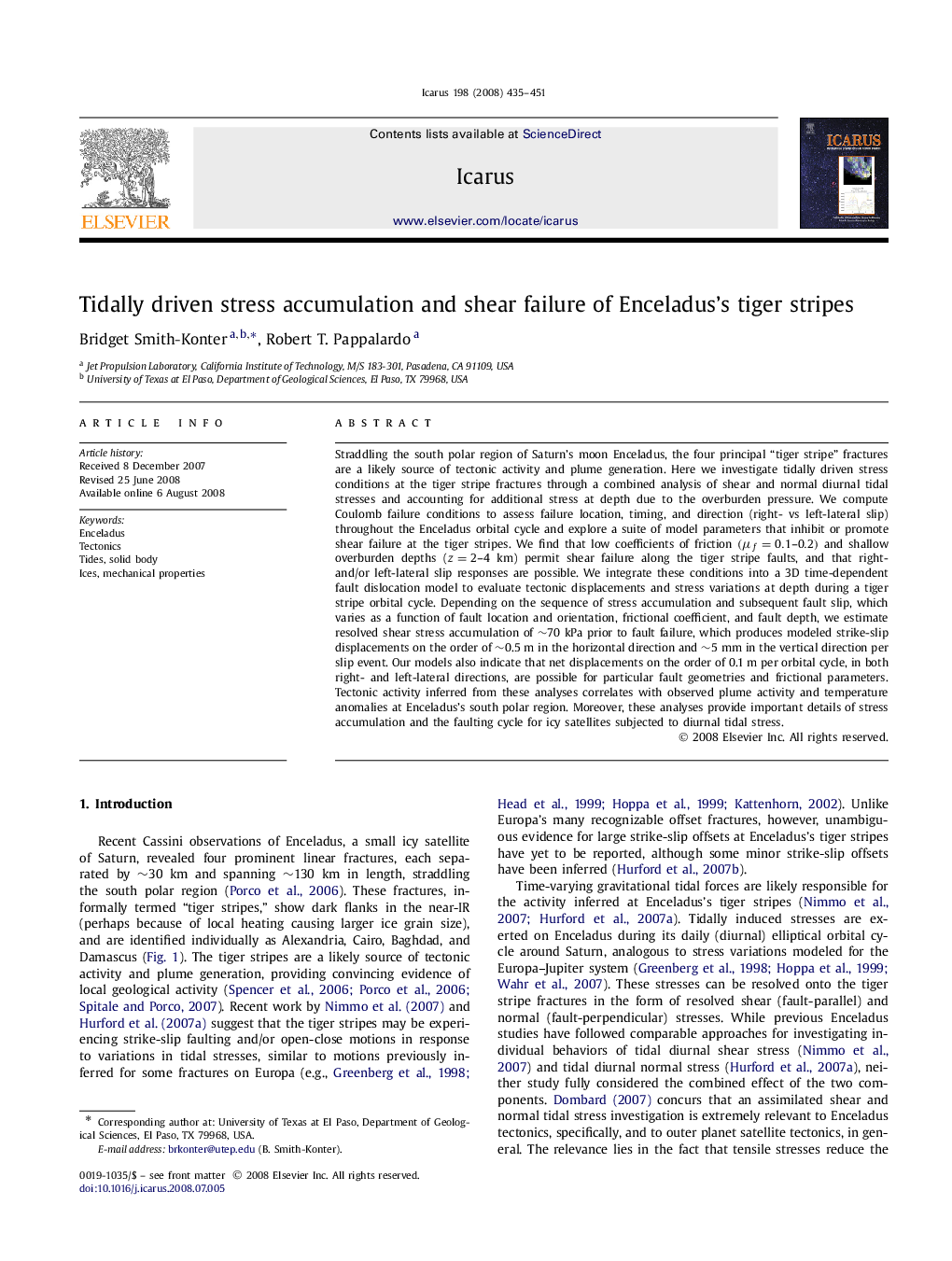| Article ID | Journal | Published Year | Pages | File Type |
|---|---|---|---|---|
| 1775640 | Icarus | 2008 | 17 Pages |
Abstract
Straddling the south polar region of Saturn's moon Enceladus, the four principal “tiger stripe” fractures are a likely source of tectonic activity and plume generation. Here we investigate tidally driven stress conditions at the tiger stripe fractures through a combined analysis of shear and normal diurnal tidal stresses and accounting for additional stress at depth due to the overburden pressure. We compute Coulomb failure conditions to assess failure location, timing, and direction (right- vs left-lateral slip) throughout the Enceladus orbital cycle and explore a suite of model parameters that inhibit or promote shear failure at the tiger stripes. We find that low coefficients of friction (μf=0.1-0.2) and shallow overburden depths (z=2-4km) permit shear failure along the tiger stripe faults, and that right- and/or left-lateral slip responses are possible. We integrate these conditions into a 3D time-dependent fault dislocation model to evaluate tectonic displacements and stress variations at depth during a tiger stripe orbital cycle. Depending on the sequence of stress accumulation and subsequent fault slip, which varies as a function of fault location and orientation, frictional coefficient, and fault depth, we estimate resolved shear stress accumulation of â¼70 kPa prior to fault failure, which produces modeled strike-slip displacements on the order of â¼0.5 m in the horizontal direction and â¼5 mm in the vertical direction per slip event. Our models also indicate that net displacements on the order of 0.1 m per orbital cycle, in both right- and left-lateral directions, are possible for particular fault geometries and frictional parameters. Tectonic activity inferred from these analyses correlates with observed plume activity and temperature anomalies at Enceladus's south polar region. Moreover, these analyses provide important details of stress accumulation and the faulting cycle for icy satellites subjected to diurnal tidal stress.
Related Topics
Physical Sciences and Engineering
Earth and Planetary Sciences
Space and Planetary Science
Authors
Bridget Smith-Konter, Robert T. Pappalardo,
